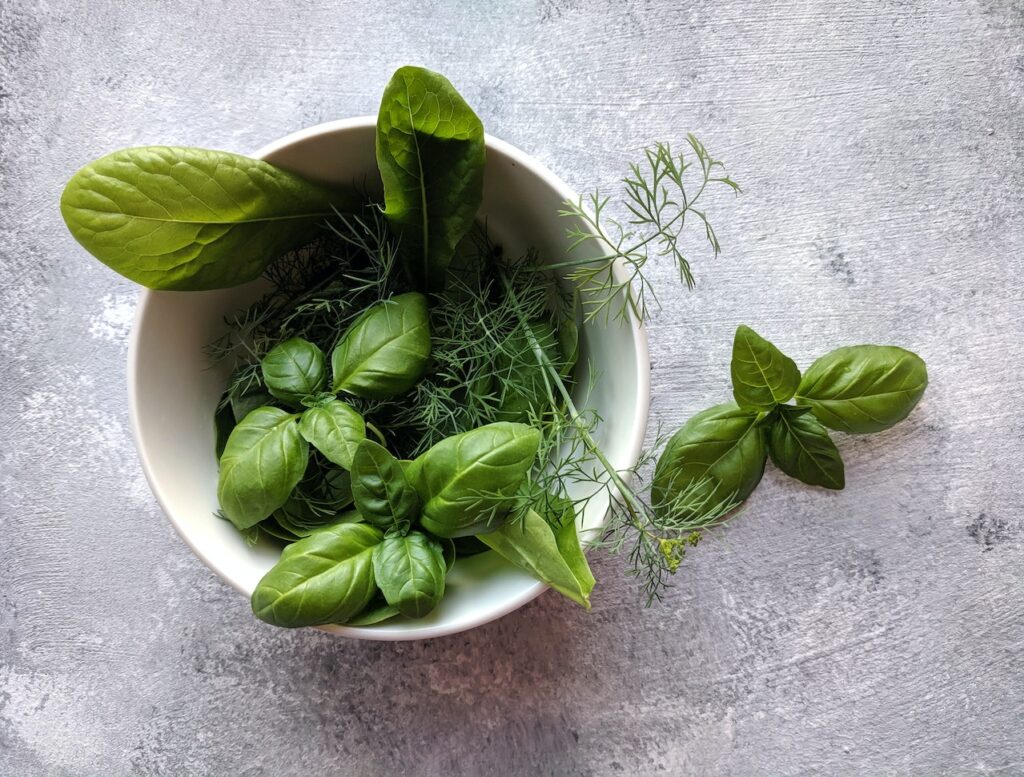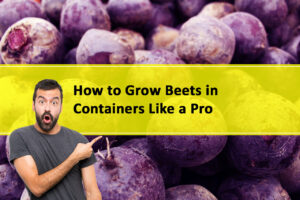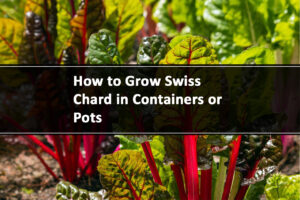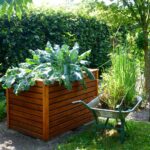Beautiful Plants For Your Interior

Aromatic Delights at Your Fingertips: How to Grow Basil in a Pot
Basil, a fragrant and versatile herb, is a staple in many cuisines around the world. Whether you have a spacious garden or limited outdoor space, growing basil in a pot is an excellent option. In this comprehensive guide, we will provide you with a step-by-step guide on how to grow basil successfully, right from choosing the right pot and soil to caring for your plants. So, if you’re wondering how to grow basil, you’ve come to the right place!
10 Benefits of Growing Basil in a Pot

Growing basil in a pot offers several advantages that make it a great choice for gardeners, even with limited space. Here are the benefits of growing basil in a pot:
1. Space-efficient: Basil plants are compact and don’t require much room. With pots, you can grow basil on a small balcony or patio.
2. Versatile: Pots can be moved around, so you can optimize sunlight and protect the plants from harsh weather.
3. Better soil control: You have full control over the soil quality in pots, ensuring the best conditions for your basil.
4. Improved drainage: Pots have drainage holes, preventing waterlogged roots and promoting healthier plants.

5. Pest and disease management: Potted plants are isolated, reducing the risk of pests and diseases from the ground.
6. Easy mobility: Potted basil can be moved indoors during bad weather, extending the growing season.
7. Aesthetic appeal: Potted basil adds greenery and fragrance to your living spaces, enhancing their beauty.
8. Easy access: Having basil pots nearby means you always have fresh basil leaves for cooking.
9. Educational experience: Growing basil in pots can teach children about urban gardening and plant life cycles.
10. Culinary benefits: Potted basil allows you to produce flavorful leaves for cooking.
How to Grow Basil in a Pot: A Foolproof Method for Fresh and Fragrant Herbs
1. Selecting the Right Pot and Soil

To ensure the optimal growth of your basil plants, choosing the right pot and soil is crucial. Here are some key considerations:
Pot Size: Select a pot that provides enough space for the basil’s root system to grow. A pot with a diameter of at least 6-8 inches and a depth of 6-8 inches should be sufficient. Make sure it has drainage holes to prevent waterlogging.

Basil Planters Pots
3 Piece Ceramic Plant pots Indoor Pots Set with Drainage Holes, 5.7/4.7/3.5/inch, Modern Decorative pots for Plants and Herbs
Drainage: Proper drainage is essential to prevent water accumulation, which can lead to root rot. Ensure that the pot has drainage holes or add a layer of gravel at the bottom to facilitate water flow.

Soil: Opt for a lightweight and well-draining potting mix, preferably with a pH level between 6 and 7. You can also enhance the soil’s fertility by adding organic matter such as compost or aged manure. Avoid using heavy garden soil, as it may hinder drainage.
Location: Basil loves sunlight, so choose a location that receives at least six hours of direct sunlight per day. If you don’t have access to direct sunlight, consider using grow lights to supplement the natural light.
Pot Selection: While basil can be grown in various types of pots, terracotta or ceramic pots are popular choices. These materials provide good drainage and help regulate moisture levels in the soil.
Potting Techniques: When potting your basil, fill the pot about three-quarters full with the potting mix. Gently place the basil plant in the center and fill in the remaining space with the potting mix. Pat the soil down lightly to secure the plant.
2. Planting Basil Seeds or Seedlings

Once you have prepared the pot and soil, it’s time to plant your basil seeds or seedlings. Follow these steps:
Seeds: If starting from seeds, sow them approximately 1/4 inch deep into the soil, ensuring proper spacing between each seed. Gently cover the seeds with soil and water them lightly. Place a plastic wrap or a dome over the pot to create a mini greenhouse effect, which helps retain moisture and warmth for faster germination.

Basil Planters Pots
Plastic-Plant-Planters-14 Inch With Drainage Hole & Saucer, 3 Packs Lightweight Small Resin Pot Indoor Outdoor, Retro Antique Imitation Decorative Garden Containers Sets For Houseplants

Seedlings: If using seedlings, make a hole in the soil large enough to accommodate the root ball of the seedling. Place the seedling in the hole, ensuring that the soil level remains consistent with the plant’s base. Gently press the soil around the seedling to secure it in place.
Watering: After planting, water the soil thoroughly but gently. Basil prefers slightly moist soil, so water whenever the top inch of the soil feels dry to the touch. Avoid overwatering, as it can lead to root rot. It’s essential to strike a balance to ensure the soil doesn’t dry out completely.
Germination: Basil seeds usually germinate within 7 to 14 days, depending on the variety and growing conditions. During this time, keep the soil consistently moist and provide warmth to facilitate germination. Once the seedlings emerge, remove the plastic wrap or dome.
Thinning: If you have multiple seedlings growing close together, thin them out to provide adequate space for each plant to grow. Choose the healthiest and strongest-looking seedlings and gently remove the excess ones by snipping them at the soil level.
3. Proper Care and Maintenance

Basil plants require consistent care to thrive. Here are some essential care tips:
Watering: Basil plants need regular watering to maintain soil moisture. Water at the base of the plant to avoid wetting the leaves, as this can make them susceptible to diseases. During hot and dry periods, you may need to water more frequently. Be mindful of not overwatering, as it can lead to root rot.

Pruning: Regular pruning encourages bushier growth and prevents the plant from flowering too early. Pinch off the top pair of leaves when the plant has developed six sets of leaves. This will stimulate lateral growth and ensure a more compact and productive plant.
Harvesting: Harvesting basil leaves regularly promotes continuous growth and prevents the plant from becoming woody. Start harvesting when the plant has developed a substantial number of leaves. Pinch off the leaves from the top, just above a pair of healthy leaves. Avoid harvesting more than one-third of the plant at a time to allow for regrowth.
Mulching: Applying a layer of organic mulch around the base of the basil plant can help conserve moisture, regulate soil temperature, and suppress weed growth. Use materials like straw, wood chips, or dried leaves as mulch.

10-10-10 fertilizer for plants: Espoma Garden Granules Plant Food.
10-10-10 is considered an all-purpose, balanced fertilizer that you can use for all kinds of plants and situations.
Fertilization: Basil is a moderately heavy feeder, so providing nutrients is crucial for healthy growth. Apply a balanced organic fertilizer every four to six weeks during the growing season. Avoid over-fertilization, as it can lead to excessive leaf growth with less flavor.
4. Pests and Diseases

While basil is generally resilient, it can be susceptible to certain pests and diseases. Here are a few common issues to watch out for:

Aphids: These tiny insects can cause damage to the leaves. Use a strong spray of water or an insecticidal soap to control them. You can also introduce beneficial insects like ladybugs or lacewings to help keep aphid populations in check.
Fusarium Wilt: This fungal disease can cause wilting and yellowing of leaves. To prevent its spread, avoid overwatering and remove any infected plants promptly. Crop rotation is also beneficial in preventing the disease from recurring.
Downy Mildew: It appears as yellowish or brown spots on the leaves. To prevent this fungal disease, ensure good air circulation by providing enough space between plants. Avoid watering the leaves and water in the early morning so that the foliage has time to dry before nightfall.
Slugs and Snails: These pests can cause damage to the leaves and stems of basil plants. Use physical barriers like copper tape or diatomaceous earth around the pots to deter them. You can also handpick them in the evening when they are most active.
People also ask
-
How to grow basil from cuttings?
To grow basil from cuttings, select a healthy stem with leaves, place it in water until roots develop, then transplant it into a pot with well-draining soil. Keep it moist and provide sunlight.
-
How to prune basil?
To prune basil, pinch off the top pair of leaves on each stem when it has around six sets of leaves. This encourages bushier growth and prevents premature flowering, ensuring a more productive plant.
-
What size pot for basil is best?
The best pot size for growing basil is typically 6-8 inches in diameter and depth. This size provides enough space for the basil’s root system to grow and allows for proper drainage to ensure the plant’s health and vitality.
-
Is Growing basil from supermarket plants possible?
Yes, it is possible to grow basil from a supermarket plant. Many supermarket basil plants are sold in small pots and can be successfully transplanted into larger pots or garden beds. Ensure you provide the proper care, including adequate sunlight, water, and nutrients, to help the plant thrive and continue to grow.
-
What should be the Basil container depth?
The container depth for growing basil should be around 6-8 inches. This depth allows sufficient room for the basil’s root system to develop and prevents overcrowding. Ensure that the container has drainage holes to avoid waterlogging and promote healthy growth.
-
How many basil plants per pot?
It is recommended to plant one basil plant per pot. Planting one basil plant per pot allows each plant to have enough space to grow and develop a healthy root system without competing for resources. This ensures that each plant receives the necessary nutrients and sunlight for optimal growth.
-
How much sunlight does basil need?
Basil loves sunlight and thrives in at least six hours of direct sunlight per day. If direct sunlight is limited, consider using grow lights to supplement the natural light.
-
Can I start basil from seeds or should I use seedlings?
Basil can be started from seeds or purchased as seedlings. Seeds take longer to germinate, while seedlings allow for quicker establishment. Choose the method that suits your preference and timeline.
-
How often should I water my potted basil?
Basil prefers slightly moist soil. Water the plant whenever the top inch of the soil feels dry to the touch. Avoid overwatering, as it can lead to root rot.
-
Can I use garden soil to grow basil in a pot?
It’s best to avoid using garden soil for potting basil. Garden soil is often heavy and may hinder drainage. Opt for a lightweight and well-draining potting mix instead.
Bottom Line How to Grow Basil in a Pot
Growing basil in a pot is a rewarding and accessible way to enjoy this aromatic herb. By selecting the right pot and soil, planting with care, providing proper maintenance, and addressing potential pests and diseases, you can successfully grow basil in your own home. Now that you know how to grow basil, it’s time to get your hands dirty and start cultivating this flavorful herb!







